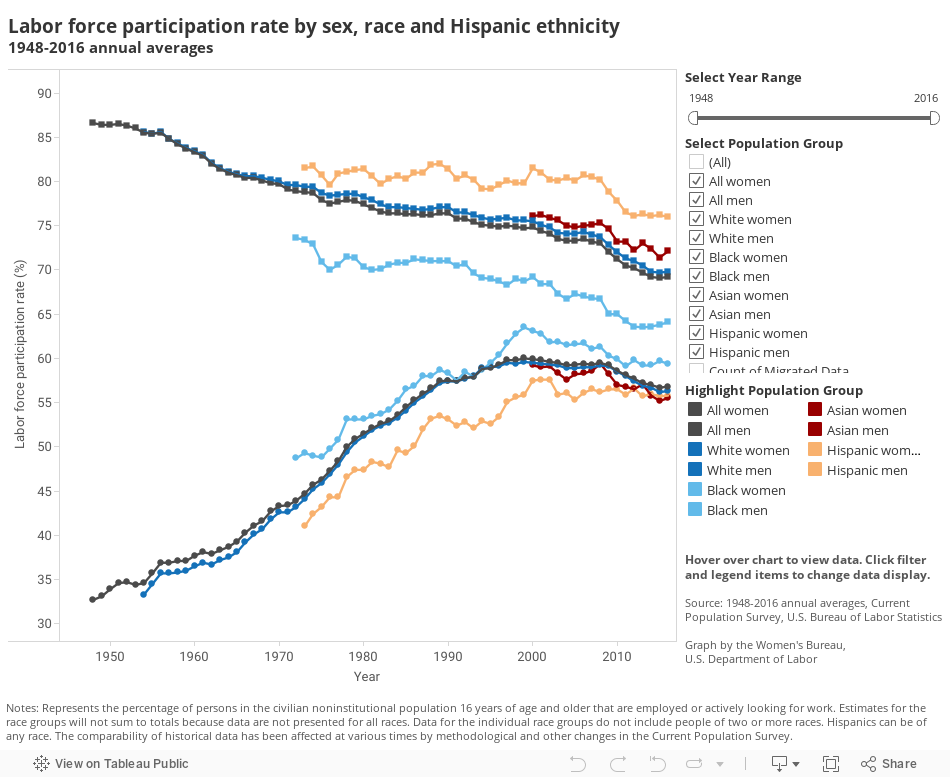"At the Labor Department, we like to brag about Frances Perkins, who was both the first woman to serve in the Cabinet (starting in 1933) and the longest serving, since she held the position for 12 years. Moreover, we’ve had more women leaders (seven) than any other department. The women who have led the department all made meaningful improvements to the lives of America’s workers – as have countless working women who have advocated for themselves and their coworkers, and had a lasting impact on work in America.
Despite decades of progress, we know that too many women still aren’t enjoying equity at work. Women – and women of color in particular – are overrepresented in jobs with lower wages and fewer benefits. And even within specific industries and jobs, gender and racial wage gaps persist.
As we celebrate Women’s History Month, we recognize the progress women have made and reflect on the current status of working women in America – and the work that remains to be done. Here are some interesting facts about working women.
Women are critical to America’s economy.
Women account for 46.8% of the labor force – 76.6 million in all.
40.5% of women are the primary or co-breadwinner for their families.
Nearly 1 in 10 women workers are in a union – about 6.5 million, accounting for 46.3% of all union workers.
Women have been disproportionately affected by the pandemic.
The unemployment rate for women 20 and older is currently 3.6% - down from a peak of 15.5% in April 2020, but still higher than it was in the months leading up to the pandemic.
For women of color in particular, the recovery has been even slower. In January 2022, the unemployment rate for Black women was 5.8% and for Hispanic women it was 4.9%.."
Working women



